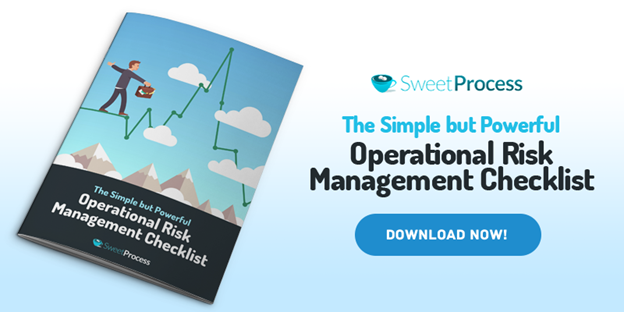Last Updated on March 26, 2025 by Owen McGab Enaohwo
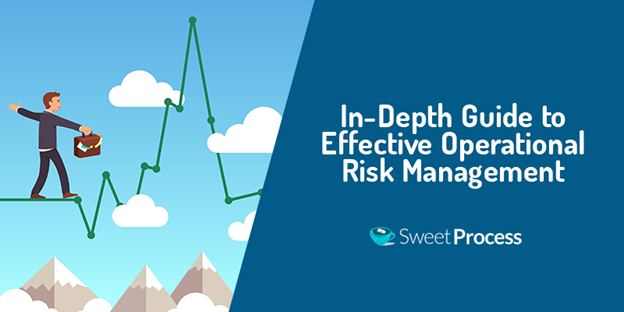
Imagine you’re an operational risk manager. You face the tough task of assuring your boss that all operational risks are well managed. But the company’s risk strategies are all outdated and ineffective.
Lacking an effective ORM (or operational risk management) system affects a company’s output. And that triggers loss of profits, missed opportunities, damaged reputation, and customer dissatisfaction.
The possibility of something going wrong in an organization that fails to manage and mitigate risks is always so high.
Things could go wrong through a failure in a process or a human failure. The most unpredictable failure (and likely to cause damage) is human failure.
But the good thing is that an effective ORM can manage and reduce all human failures in a company.
In this guide, you’ll learn about operational risk management and what you can do to reduce the impact of danger
and uncertainty in an organization.
Table of Contents
Chapter 1: What is Operational Risk Management?
Chapter 2: Benefits of Operational Risk Management
Chapter 3: Common ORM Challenges
Chapter 4: How Operational Risk Management Process Works
Chapter 5: Three Levels of Operational Risk Management
Chapter 7: Effective Operational Risk Management: Examples
Chapter 8: Targeted Analytics Tools
Chapter 9: Operational Risk Management Software
Chapter 10: Improve Your ORM and Business Processes with SweetProcess
Chapter 1: What is Operational Risk Management?

This chapter explores the definition and examples of operational risk—what operational risk management is, and how exactly it works.
The Definition of Operational Risk
The term operational risk came into existence in the early 1990s.
As people became aware of risks, they sought a more common definition of what they were talking about.
And they found one:
“Operational risk is the risk of loss. Loss that results from failed internal processes, people, and systems, or external events. This definition includes legal risk, but excludes strategic and reputational risk.”
The Basel Committee on Banking Supervision (or BCBS) published the above definition. It’s now the most commonly used definition.
In simple words, operational risk is an unexpected risk, a form of business risk that occurs when internal processes, humans, or systems fail. Most companies today face such risks when carrying out everyday activities.
The BCBS crafted the definition purposely for banks (to manage financial risks). But the definition also represents risks found in other industries.
The Basel Committee did a great job defining what operational risk is. However, they failed to explain what the other group of risks meant. (Read: people risk, process risk, systems risk, and external events risk.) We’ll get into that shortly.
Examples of Operational Risk
If you ignore large or small operational risk failures, your company risks a loss in profits and you’ll end up harming your bottom line and reputation, too.
Here are some examples of operational risk:
- Internal and external fraud
- Employment practices and workplace safety
- Clients, products, and business practices
- Damage to physical assets
- Business disruption and systems failures
- Execution, delivery, and process management
Remember the four groups of risks mentioned in the Basel Committee definition? We’ve placed each of the above examples (in their respective group of risks) for clarity.
People Risk
People risk includes the following:
- Fraud
- Loss or lack of key personnel
- Unauthorized activity
- Unemployment law breaches
- Inadequate training and supervision
Process Risk
Process risk includes the following:
- Project management failures
- Errors in valuation or pricing models and processes
- Payment or settlement failures
- Documentation that’s not fit for purpose
- Internal or external reporting
Systems Risk
Systems risk includes the following:
- Failures during the development and systems implementation process
- Failures of the system itself
- Inadequate resources
External Events Risk
External events risk includes the following:
- External crime
- Outsourcing and insourcing risk
- Natural and other disasters
- Regulatory risk
- Political risk
- Utilities failures
- Competition
To understand operational risk even better, ask yourself:
“What keeps me awake at night?”
Or, better yet:
“What areas can I improve for my business to achieve its goals?”
Then think about factors preventing that from happening. Chances are that your answers will (most likely) include:
- Employee retention
- Political risk
- Loss of reputation
- General liability
- Physical damage
- Computer failure
- Business interruption
- Product liability
- Terrorism
- Failure of a key strategic alliance
- Failure of the organization to change/adapt
Definition of Operational Risk Management (ORM)
The Federal Aviation Administration (FAA) defines ORM as an effective tool that helps companies make informed decisions on operational risks; a tool that determines the right courses of action to take in any given situation.
The ORM toolbox contains the following:
- Loss data collection programs
- Risk and control self‐assessments
- Scenario analysis activities
- Key risk indicators
- Powerful reporting
Overview of How ORM Works
Operational risk is so extensive. Organizations need to first consider all its aspects before making necessary decisions. The goal here is to manage and mitigate all operational risks to acceptable levels.
ORM’s main goal is to lower management risks through monitoring and reporting, measurement and mitigating, risk assessment, and risk identification while determining who can best manage the company’s operational risk.
Four principles often guide each of the operational management stages:
- Make risk decisions at the right level
- Plan to expect and manage risk
- Avoid unnecessary risk
- Accept all risk, if benefits outweigh the cost
Chapter 2: Benefits of Operational Risk Management

A smooth-running and well-structured ORM system poses many benefits for an organization, including:
Reduces operational costs, enhances compliance
Many companies today incur a loss in profits thanks to not having an ORM system that tracks risks. Luckily, ORM tools can identify and manage potential risks before they happen.
Reducing (or eliminating) these potential risk events is necessary, especially if you aim to increase the efficiency of your company’s day-to-day operations.
Also, an ORM tool plays a key role in guaranteeing regulatory compliance. For the record, regulatory compliance is part of doing business. You can improve your competitive edge by ensuring your ORM program is compliant.
Minimizes volatility
A company can fail to meet its earnings expectations. It happens, thanks to large operational risk loss events that affect the stress of its profit-and-loss account.
Such risk events can lower a company’s market value. But sound ORM reduces volatility and helps in meeting all your revenue and profit targets.
Frees up capital
The earning capacity of a company is proportional to its capital. So, if a company has a sizable capital, then its earning capacity will reflect the same.
Dumping large capital into a business means you can take a greater operational risk. If a company’s ORM system is well organized, it frees up more capital for income-generating activities.
Increases customer satisfaction
It’s common knowledge that customers prefer working with a reputable organization. So, a less-performing company is more prone to losing customers. Losing customers means spending more to find new customers. That’s even more expensive than keeping existing customers.
Having a strong ORM system can help increase customer satisfaction by minimizing factors leading to risk events.
Improves insurance coverage
A company is more likely to recognize its insurance coverage needs if it’s more familiar with its ORM report. In most cases, better risk management information can help a company to negotiate its positions in premiums paid.
Boosts ratings
If an organization boasts effective risk management, it’s more likely to also boast a higher rating as well.
Rating agencies, in their rating process, often consider effective ORM. So, quality risk management is often linked with effective ORM.
Stronger decision-making process
Clear ORM is a fundamental element of informed decision-making. An effective ORM system can support decision-making in an organization.
For example, a business model can show the likely outcome of a company breaking into a new market with a different legal system. A good ORM program provides assurance on the effectiveness of internal controls.
Chapter 3: Common ORM Challenges

Operational risk management is familiar to many, yet difficult to understand. Building an effective ORM system for a company is a tough task open to many challenges. Let us look at some of them.
Lack of resources
Most companies wish to use an effective ORM, but they lack the resources to achieve their desired goal. You can’t blame them, though. The cost of mitigating operational risk is expensive.
Difficulty in implementation
Implementing an ORM program in an organization can prove a great challenge especially when board members decry complexities in using the program.
Also, ensure senior management and the board take the ORM program seriously, and that they fully take part in developing an operational risk management framework.
Operational risk is reputation risk as well as a strategic risk and business risk. Managers are responsible for ensuring ORM is part of the business strategy in a company.
Regulating ORM tools into dealing with only internal process risks is impossible. To achieve effectiveness, an ORM program should be an integral part of the decision-making process. And everyone, including senior management, should embrace it.
Technological challenges
Manual techniques are common in risk management as they support expert judgment activities, or help record the results and provide effective reporting in risk analysis.
Unfortunately, manual techniques such as questionnaires and interviews pose great challenges. They take too long. They interfere with the progress of the project. And they can create biases of interviewees.
To overcome these challenges, use an ORM tool that meets the company’s needs. Piecing together data from many experts (with high volumes of data) is tedious. Therefore, you need an ORM program with proper coordination.
Educating employees on the benefits can be tough
Setting up a culture where reporting of risk events and “near misses” is important. But most employees try to avoid doing all that. If you don’t report risk events, how then will you understand what’s happening?
Make it a priority to pursue a policy of continuous improvement. Gather information on major incidents that threaten your organization. Remember, most disasters that occur in an organization stem from human failures. And the most dangerous of them all is the failure to learn.
So, equipping and educating employees on the benefits of intelligent ORM tools can help them see and analyze risks as well as learn from them.
Remember: inconsistent risk assessment tactics lead to inaccurate data.
To estimate exposure to operational risk, you need expert judgment to help where loss data and external loss data cannot provide enough feedback.
Expert judgment is often used in various sectors:
- Financial
- Aviation
- IT
- Nuclear
- Meteorology sectors
The expert estimates and identifies the level of uncertainty about operational risk.
Exploiting expert judgment requires individual or group self-assessments to help provide an estimate of a company’s exposure to operational risks.
But the inconsistent use of risk assessments makes consolidating and analyzing data difficult. Risk assessments are tedious and time-consuming and are often not conducted frequently, so they don’t provide a dynamic view of operational risks in organizations.
Lack of interest and attention to ORM as an important function
Many organizations lack an open culture for transparency between managers and their executives. That’s because they also lack an effective ORM system in the organization. Encourage conversations about trade-offs, risks, and concerns without castigating (or shooting) the messenger.
Doing so will help enhance transparency in an organization, and improve interest and attention to operational risk management programs.
Chapter 4: How Operational Risk Management Process Works

You’ve overcome several ORM challenges. It’s now time to learn how an operational risk management process works. Before you put in place the ORM process, consider these five-step phases of the process. They hold value and great guidance.
Step 1: Identification of risk
You need to understand your project’s objectives and what the project is all about before you kick off the ORM process.
That said, identifying all your project-related risks is the first step of the ORM process. Once identified, list the risk accompanying each phase of your project. For instance:
- Hazard risks include fires or injuries
- Operational risks include turnover or supplier failure
- Financial risks include economic recession
- Strategic risks include a brand reputation or new competitors
To create a great risk analysis, outline each risk keenly. Leave no stone unturned. Then carefully develop a risk assessment.
To better compile as many risks as possible, focus on the “what if” question. That way, you’ll identify potential operational risks.
Be specific in identifying operational risk and your assessment will be more accurate. It will also help you create risk control options. These three core elements of the ORM process—communicate, evaluate, and validate—can help you identify risks.
A. Communicate (your intentions with others)
Communicating with others in an organization is essential. It enhances situational awareness, breaks error chains, and helps teams effectively convey their intents and objectives.
For the record, everyone (despite their rank) has a responsibility to develop good communication practices, such as:
- Asking when you’re unsure or clueless
- Acknowledging messages/emails
- Communicating potential operational risks
- Debriefing your actions
- Briefing others as required
B. Evaluate (actions and changes around you)
To improve and maintain accurate situational awareness, key decision-makers in a company should evaluate conditions in the ever-changing and complicated operational environment. Evaluating all the actions and changes around you is an ongoing aspect of the ORM process.
C. Validate (your assumptions)
Every operational environment is naturally complex. Most people often struggle to get all the necessary information they need. That said, confirming the accuracy of the information used in making informed decisions lowers the probability of unintended outcomes.
As time goes by, situations change as more information is gathered. The company’s decision-maker is compelled to confirm the accuracy and relevance of the gathered information, then determine its effectiveness.
Step 2: Assessment of risk
Having identified the risk, it’s time to make a risk assessment. Consider operational risks that meet all the objectives of your company’s project.
Before making a risk assessment of an event, find out the probabilities of a risk event happening. If the event does happen, how severe are the effects? Finding the severity of the outcome of the given task can help assess operational risk.
To get the precise probabilities and outcomes of an event occurring, get a subject matter expert to do a risk analysis. Due to different factors, including individual factors, the risk analysis is subjective.
Tools used in assessing operational risks include:
- Risk Assessment Matrix. It assigns risk assessment codes to each operational risk experienced during the completion of a task.
- Risk Assessment Tool (RAT). It compiles a total risk score, assigns scores to risk elements, and provides quick mechanisms to assess operational risk. It then equates all that information to a relative evaluation of risk.
Step 3: Mitigation of risk
Making informed risk decisions is the third step of the ORM process. To better mitigate operational risks in an organization, three key actions are necessary:
- Identify operational risk management strategies. Identifying operational risk is just half the journey. You need to determine management actions to effectively reduce risk in an organization. Control options involve applying strategic options to better manage the level of identified risk.
- Evaluate the effects of control and the risks involved. You have proposed controls in place. Now analyze the risk. Do the benefits of meeting your goal outweigh the degree of risk? If so, determine if the levels of the chain of command can put in place all the controls. If not, find help at the next level in the chain of command.
- Decide how to best proceed. In short, find a risk decision authority or someone authorized to approve projects at every risk level, someone who ensures all personnel in an organization understands the approval process.
Step 4: Implementation of control measures
You’ve now mitigated risks. The next step is to find resources to implement specific risk management strategies. Implementation of control measures calls for communicating your strategy to all involved personnel.
Communicating with the employee chosen to execute the project’s goals is part of implementing control measures.
If the individual agrees to the level of risk related to the project, document their decision. Include all the steps in the process if possible. It helps for better communication and clarity of the logic behind their decision.
If the individual finds the risk too high and putting in place the controls no longer effective, don’t worry. Consider revisiting risk decisions (in Step #3) to either reject the course of action or develop more or alternate controls.
Step 5: Monitoring and reviewing
The final step in the ORM process is monitoring and reviewing the situation. Ensure all the controls are effective and in place too.
Before supervising this last process, identify all risk management issues and act on them immediately. Also, take action on ineffective risk controls. Then restart the entire risk management process when new operational risks occur.
To enhance the effectiveness of control efforts for known operational risks, review all the information covered in Step 5 to implement all the control measures covered in Step 4.
Chapter 5: Three Levels of Operational Risk Management
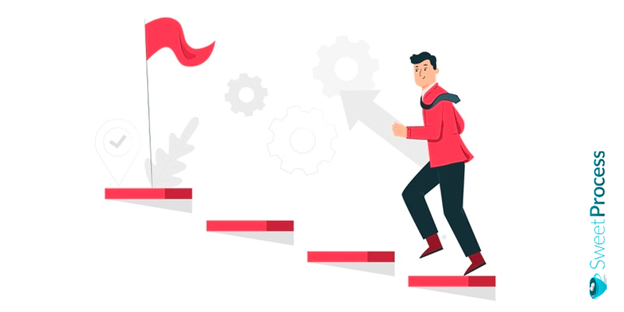
To make risk management an automatic part of your decision-making process, apply these three levels of ORM:
Deliberate ORM
Deliberate ORM uses brainstorming and experiences to identify risks and develop controls. It’s most effective when applied in a large group.
Examples of deliberate ORM applications include, but are not limited to:
- Disaster response planning
- Cadet activity
- Planning a flight clinic
Deliberate ORM is best applied in the planning stages of an activity, such as advance stages, where there is time to analyze steps and make informed risk decisions. To use risk controls, apply deliberate ORM into the early planning stages.
Time-Critical ORM
Time-critical ORM is a “quick” review of a project. This ORM level uses the basic ORM process without recording information gathered. Good examples include checklists and staff briefings. They help mitigate operational risks in time-critical situations.
You can put in place time-critical ORM in the early stages of a crisis response situation. This level is best designed to mitigate risks, especially when making risk decisions in situations where employees have little time.
In-Depth (or Strategic) ORM
In complex situations where operational risk is difficult to understand, strategic ORM comes in handy. This level of ORM is in-depth and long-term. It involves extensive research, tracking associated risks, and analysis tools.
In-depth ORM is useful in high-visibility risks. It requires lots of time and resources to install.
Organizations can enjoy using strategic ORM to target risk management barriers as well as help improve training and operations.
Chapter 6: The ABCD Model
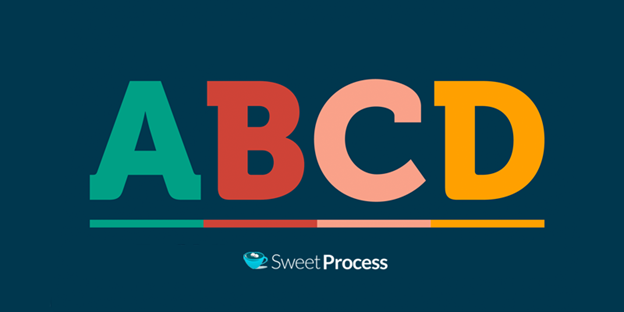
The ABCD model is a time-critical risk management reminder that stands for:
- A — Assess the situation
- B — Balance resources
- C — Communicate to others
- D — Do and debrief
The ABCD model is useful during team communication to help focus individuals on understanding operational risks. Individuals may also use it as a self-assessment tool. Let’s look at each part of the ABCD model:
Assess the situation
Assessing the situation means making a self-assessment of your potential errors. To better assess operational risk, focus on the first two steps of the five-step ORM process. (That is, identification and assessment of risk).
Assessing the situation also requires an accurate perception of the situation at hand—and in a short time. Self-assessment relies on an individual’s ability to understand situations, and how well they can apply appropriate and available resources fast and effectively.
Also, making an assessment of your errors could mean the difference between success and failure.
Balance resources
Finding a balance in a company’s resources is often tied to making risk decisions. (We’ve covered these in Steps 3 to 5 of the five-step ORM process).
To improve risk management, use specific resources meant for the organization’s activity.
Also, do thorough planning before the risk event. Doing so will help increase the availability of appropriate resources for your project. Examples of balancing resources include proper training, understanding task or mission, and PPE.
Communicate to others
Communication is key to improving business processes in all industries. The “C” reminds us to communicate with individuals in an organization.
By communicating, you always maintain good self-assessment, improve task loading, and enhance individual factors. All these are key components in an organization’s success. But the communication model becomes limited when under stress or when there’s little to no time to implement it.
Before communicating to one or more individuals, find out who needs to know what you have to say, then what you can do, and who can help or assist you thereafter.
Do and debrief
For better results, make sure to do and debrief the risk event. If you don’t know how to do that, Steps 4 and Step 5 of the five-step ORM process link to the “D” model of the ABCD reminder. You’ll find more information therein.
The do and debrief reminder ensures the feedback loop works well when communicating. When using this model, always identify what works and what does not work.
The debriefing of risks ensures learning, recording, and disseminating of the risk lessons. Also, it enhances individual performance and mitigates risks. Nothing could be more essential to completing the ABCD loop.
Chapter 7: Effective Operational Risk Management: Examples

Various organizations have different approaches to risk management. Here are three examples of organizations that focus on effective OR.
Bank of International Settlements
The Bank of International Settlements (BIS) engages in customer-related banking activities including financial risks comprising liquidity, market, and credit risks. All these risks expose the bank to operational risks.
BIS, using ORM, discovered that effective ORM identifies, measures, and controls, as well as monitors and reports all financial risks for banks.
To achieve its goals, BIS uses an effective ORM system to cover financial risks. They also use operational transformation and resiliency to cover operational risks. Both are ORM strategies that help track adherence to bank rules and limits.
Read BIS’ document on how it manages operational risk.
FAA
The Federal Aviation Administration (FAA) works in an environment where the chances of something going wrong are high. So, it helps to have an effective ORM process to prevent problems, and manage and mitigate risks.
Through effective ORM, the FAA can identify risks and benefits, as well as help determine the best course of action in any given situation. All FAA operations need ORM to improve decision-making when covering risk management.
The FAA’s decision-making process takes into account the importance of operations, timelines of decisions required, and the level of management empowered to make those operational decisions.
Through an effective ORM process, the FAA identifies and manages operational risks. The FAA uses the same disciplined process to help cover other aspects of the FAA. This helps mitigate risks to all personnel and resources at the lowest level.
Read the FAA’s in-depth ORM chapter.
The US Navy
Effective ORM has so far helped the Navy’s Naval Aviation unit to reduce accident rates to new lows.
Improving the safety of the naval fleet unit is no easy feat. The unit helps commanding officers meet training requirements in high-risk environments. So, mastering the 5-step ORM process is vital for saving lives. It also helps conserve expensive equipment and assets.
Because the naval fleet unit operates in risky environments, an effective ORM manages those risks.
The Navy’s computer networks also operate in high-risk environments full of hackers. They thrive online and are ready to disrupt valuable US Navy information.
To manage those risks, the US Navy has adopted effective ORM to reduce possible compromise of its computer network systems. That explains why all Navy personnel take ORM training when they come on board (and every three years thereafter).
Check out the Navy’s PowerPoint slides.
Chapter 8: Targeted Analytics Tools

All areas of operational risk have advanced analytics tools. These tools help reduce false positives, reveal risks faster, and improve the detection of operational risks in an organization.
Here are some of those analytics tools:
Anti-money laundering risk tools
Most organizations use traditional rules-driven alerts to manage money laundering risks. For better risk assessment and management, adopting machine-learning analytics tools is necessary. They reduce false positives and channel resources toward cases that need immediate investigation.
Conduct risk tools
Conduct risk analytics tools help detect customer complaints, incentives, and product usage by connecting the dots across sales and identifying suspicious sales patterns. Potential conduct risk markers often use trade monitoring analytic tools to mine communication and trading patterns.
Cyber risk tools
The Internet harbors hackers with malicious intent to disrupt operations in organizations. To manage cyber risks, cyber analytics tools help reduce false-positive alerts, replace existing rules-based triggers, identify emerging threats, and analyze sources of signals.
Fraud risk tools
Fraud-based analytics tools reduce false positives and fraudulent transactions in an organization.
Process quality and regulatory risk tools
Systematic quality control tools check the accuracy of filings, disclosures, and decision-making processes, then compare them against regulatory rules and customer-provided information. These analytics tools check adherence to disclosure rules.
Third-party risk tools
Third-party risk analytics tools measure a company’s reliance on key third parties including exposing fourth parties, if necessary. These tools help improve vendor assessment and selection and planning of business continuity.
Analytics developments have helped many organizations rethink their approaches to risk detection. Through targeted analytics tools, organizations can work well and move beyond subjective controls and self-assessment.
Chapter 9: Operational Risk Management Software
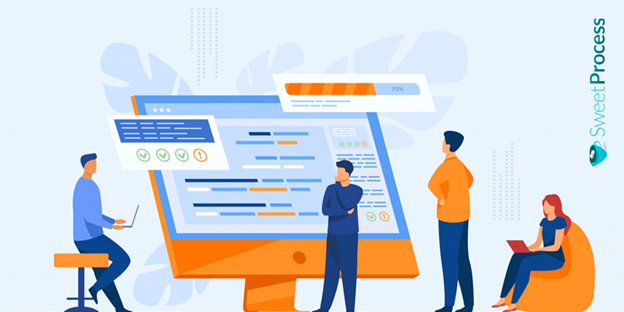
Here are nine operational risk management software solutions. They’re designed to identify and test operational risks across an organization’s department.
SweetProcess
Do you manage a team? Or are you hiring your first employee? SweetProcess gives you an ORM system to help you scale and grow your business. It can even manage and mitigate operational risks within your organization.
Here’s how SweetProcess software works:
Implements policies. SweetProcess helps you create, share and ensure your business adopts the correct policies. Having the right policies in place maintains standards and protects your business.
Masters all business processes. SweetProcess gives you the platform to craft, collaborate and refine processes to grow your business.
Manages tasks. The SweetProcess software is ever updated and tracks the latest activities. You can look back in the history of any task or procedure in your organization.
It also creates a public/private knowledge base. SweetProcess turns your existing procedures into a database for your employees or clients. Your knowledge base comes built-in with search, feedback forms, tracking, and more!
Dataminr
Dataminr is an ORM program that uses AI (artificial intelligence) to detect the most relevant, high-impact events and emerging risks in real-time so that users can respond with speed and confidence.
Global enterprises, public organizations, and leading newsrooms rely on Dataminr to achieve their risk management goals. Dataminr gives organizations critical insights into events happening around their area of operations. In response to recent risk events, Dataminr helps companies proactively identify assets that require extra protection before they can be damaged.
If you want to understand all the critical information driving your business, respond with confidence, and manage crises more effectively, use Dataminr. This ORM program will alert you ahead of anyone else to potential risks in all areas of interest.
Dataminr is best for:
- Businesses (Helps identify and respond to emerging risks in a business)
- The public sector (Enables the fastest real-time response)
- Newsrooms (Helps newsrooms discover stories that matter early)
Camms.Risk
Camms.Risk redefines the way organizations pursue opportunities and manage risks.
This ORM software helps companies and businesses make the right business decisions with an easy-to-use solution that provides a comprehensive integrated approach to governance, risk, and compliance.
As an effective ORM program, Camms.Risk is capable of improving the following areas in an organization:
- Risk management
- Compliance management
- Workplace health and safety
- Incident reporting and monitoring
- Audit management
- Cyber and IT risk management
- Flexible registers and workflows
- Third-party risk management
- Aged care
LogicManager
Want solutions to bridge your risk journey across silos? LogicManager will help you interconnect all your operational risks.
This ORM software is built on a taxonomy platform combining both governance and point solution packages into the program to easily integrate into any department and support you throughout the entirety of your organization’s risk journey.
LogicManager also prepares you for future threats by delivering quality risk data right when you need it. With the combination of a risk management platform and a dedicated advisory support partner, you’ll be equipped to protect your business and persevere with ease no matter where you are in the world.
LogicManager features include:
- Centralized risk management hub. LogicManager uses risk assessment to identify bank risk themes across your organization as well as gaps in controls and processes. It helps you gain insight into location-specific risk factors (like susceptibility to natural disasters, number of employees or departments) to truly understand your risks on an enterprise level.
- Unlimited risk management support. The software pairs customers with a team of expert risk management consultants to get your business moving forward. With a range of personalized training sessions and best practice consulting services, the ORM software makes hard work easier and delivers results to both protect and optimize your business.
BWise
BWise software provides organizations with an integrated suite of risk management solutions. It offers a complete range of capabilities that fully support your risk management program, from risk identification and assessment to risk response, monitoring, aggregation, and communication.
Key benefits of using BWise include:
- You get an all-round, 360 view of your risk management with real-time, drillable dashboards.
- Embeds risk management throughout your organization through powerful workflows and an intuitive user interface.
- You also get risk management at the board’s table by providing strategic risk insights to senior leadership.
BWise is internationally recognized as having the best operational risk and government, risk, and compliance (GRC) product—an enormous accolade as operational risks is arguably the most diverse and complex risk found in organizations.
Archer
Archer ORM software helps your business see operational risks around the corner.
With Archer Enterprise and Operational Risk Management as the single, central aggregation point supporting your risk management program, your organization will have a comprehensive approach to identify, assess and monitor risks consistently across their enterprise.
Here’s how Archer can benefit your operational risk management program:
Brings consistency to risk management. It standardizes your organization’s risk management process and establishes a common risk language, measurement approach, rating scale, and reporting system.
Improves decision-making. The software helps leaders manage operations and make more informed decisions by providing a clear, consolidated, and consistent view of operational risks.
Creates a culture of accountability. It helps your business get the right information into the right hands to reduce risk and drive accountability for risks to individual business unit managers.
Archer helps you understand the business context of risk with an aggregated, enterprise-wide view of operational risks. Archer Operational Risk Management helps you engage business managers in using consistent methodologies to identify and manage the risks and controls under their purview.
Corporater
The Corporater Business Management Platform is a powerful software for digitizing an organization’s management system.
The platform is very flexible and is a great toolbox for configuring and implementing tailored solutions for governance and business agility, performance management, risk management, and compliance management.
The Corporater software provides risk solutions including:
Governance — Introduces governing structures for business continuity. It creates, enhances, and protects business value by introducing governing structures needed to work smarter and faster in a unified experience.
Performance — Elevates business performance toward a strategic vision. It sets a strategic direction and continually monitors, measures, and drives your business performance to greater levels.
Risk — Monitors and mitigates risk factors in an organization. It aligns business performance with business conformance with actionable insights on KRIs (key risk indicators) to make informed decisions.
Compliance — Gains oversight and assurance to drive impact in an organization. It centralizes and automates regulatory and organizational compliance processes relevant to your organization.
AuditRunner
AuditRunner is powerful ORM software—or a low-code audit, risk, compliance, and quality software—with unmatched capabilities. It can administer all your internal audit activities on its process-based, risk-oriented internal audit module.
AuditRunner is designed to manage risk management. The (ORM) software associates risk with control points, accredited certification standards, and governing regulations, along with information inventory assets to offer the best risk management.
The software is easy to customize too. Using a hassle-free integration process, you can enjoy the benefits of the platform within weeks of kickoff. The low-code software is fully customizable and allows for compliance with any standard or regulation.
AuditRunner ORM software operates responsively and complies with a multitude of different legislation instantly—without the need for assistance.
LogicGate Risk Cloud
LogicGate Risk Cloud is an effective ORM software designed to help you accurately identify, assess, and monitor business risks with great agility.
It also monitors and documents risks, and develops action planning and remediation. And also identifies and assesses operational risks. Regarding IT risk management, it can identify information risk with pinpoint accuracy and swiftly resolve any exposure.
LogicGate Risk Cloud is also designed for third-party risk management by automating third-party risk assessments and risk scoring to improve security and privacy, including:
- Customized scoring rules
- Centralized risk dashboard
- Clear communication with third parties
This ORM software powers agile risk management across industries, including:
- Energy
- Financial services
- Healthcare
- Technology
Chapter 10: Improve Your ORM and Business Processes with SweetProcess
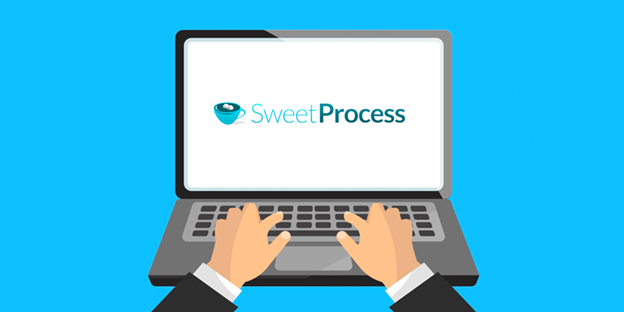
SweetProcess software streamlines business operations. It also helps you achieve success by assessing and evaluating risk management. Here are case studies showcasing how SweetProcess helps with ORM and other business processes.
Spark Marketer Boosts Employees’ Efficiency Using SweetProcess
Carter Harkins, co-founder of Spark Marketer, improved employees’ efficiency and achieved his goal by adopting standard operating procedures (SOPs).
Thanks to SweetProcess, his business processes soared, and his operational risks are now well managed.
Spark Marketer is a marketing agency that leverages digital marketing to spur growth in small- and medium-sized businesses.
Harkins reveals the absence of operational standards at Spark Marketer triggered “a lack of confidence in the structures of [his] business [that] supports growth.”
Fortunately for Harkins, adopting SweetProcess software proved a game-changer. It improved the agency’s ORM and simplified processes by decentralizing the company’s database, simplifying the documentation process, and fostering seamless employee training.
ClickFunnels Adopts SweetProcess to Increase Efficiency
ClickFunnels once experienced a hyper-growth phase. But the phase was soon tossed into the fire when the company needed to document its SOPs.
Clayton Panzeri, senior customer service lead at ClickFunnels, said when the company grew “dangerously fast” they were clueless on what to do with it. “We didn’t have the skills we needed to be successful, but we learned them quickly [using SweetProcess].”
SweetProcess helped ClickFunnels create processes and evaluate risk management procedures. Before, employees created company processes manually. Panzeri said SweetProcess improved the company’s flexibility, adding that “once we tried SweetProcess, we just fell in love.”
SweetProcess Enhances Texas DFPS’s Documentation Accuracy
For an organization to successfully streamline its operations, manage risks, and increase efficiency is no small feat. The Texas Department of Family and Protective Services (DFPS) achieved all that thanks to SweetProcess.
DFPS is an agency that provides adult protective services and child protective services, childcare investigations and prevention, early intervention and statewide intake.
The agency needed ORM software to manage operational risks in the organization. SweetProcess came in handy. Justin Compton, an employee at the agency, said updating three large manuals was a big problem. “We got to where we couldn’t update [all the manuals] fast enough.”
DFPS adopted SweetProcess and built an effective and accurate process machine. That helped DFPS offer better services to the public. SweetProcess also improved the agency’s ORM and streamlined its operations.
To improve ORM and the smooth running of business operations at your own company, sign up for a 14-day free trial on SweetProcess today. No credit card required.
Conclusion
Managing operational risk is a learnable skill.
With enough data and experience, a company can manage and assess risk management. It can also enhance the day-to-day operations and even generate higher institutional returns.
The hallmark of a strong risk culture in any organization is the employees’ behavior. Integrating those behaviors with the knowledge of ORM can improve efficiency and accuracy.
In short, using operational risk management (ORM) software is important to mitigating risks and to the success of ORM in an organization.
Want to begin the journey to effective ORM? Sign up on SweetProcess to join other companies in managing operational risk. Start your 14-day free trial today (no credit card required).
You can also download The Simple but Powerful Operational Risk Management Checklist below to help you leap into effective operational risk management.
